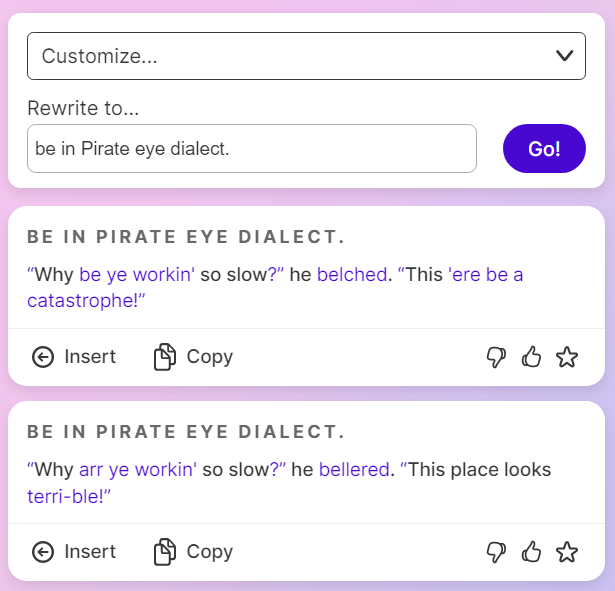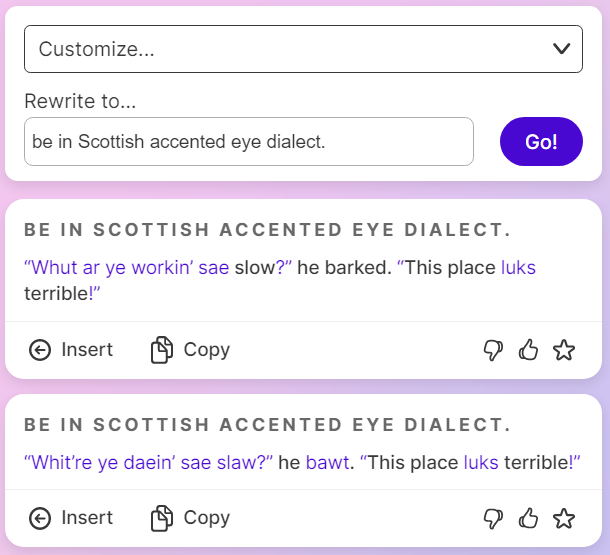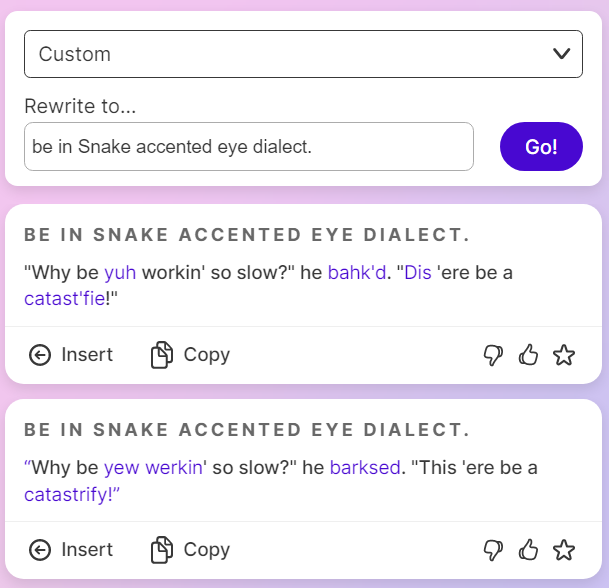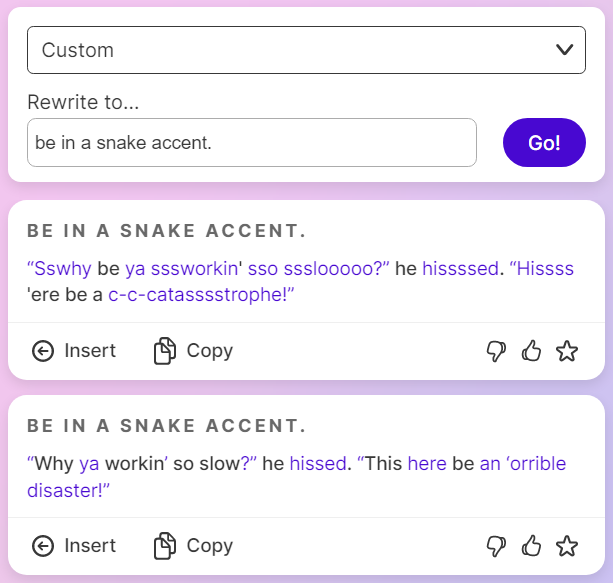How to write like a pirate. Or with an accent. Or like a snake.
Eye dialect is a literary device used to represent dialect by mimicking certain aspects of its pronunciation. It is not an accurate representation of the spoken language and often involves using nonstandard spelling to represent the sounds of everyday speech.
Eye dialect can be seen in many works of literature—Their Eyes Were Watching God by Zora Neale Hurston (1937) is a particularly good example of this as the entire novel is written in dialect and colloquial language.
“What she doin coming back here in dem overhalls? Can’t she find no dress to put on? – Where’s dat blue satin dress she left here in? – Where all dat money her husband took and died and left her? – What dat ole forty year ole ‘oman doin’ wid her hair swingin’ down her back lak some young gal? – Where she left dat young lad of a boy she went off here wid? – Thought she was going to marry? – Where he left her? – What he done wid all her money? – Betcha he off wid some gal so young she ain’t even got no hairs – Why she don’t stay in her class?”
Eye dialect is both a great tool for adding character to your writing and can make your writing difficult to read if too much is used. It is definitely a double-edged sword.
Have a good idea of why you're using it and what you're trying to accomplish by using it before unleashing it on your WIP (Work in Progress.)
Like many things, Sudowrite can make it easier.
Explore Sudowrite’s tools to refine your dialect and accent choices effortlessly!
Talk like a Pirate
We're going to take this paragraph:
The pirate strode across the deck, the wooden peg of his right leg thumping against the oak planks. The sound made the crewmembers flinch, their hands squeezing the mops and scrub brushes they held tight. "Why are you working so slow?" he barked. "This place looks terrible!"
and introduce some eye dialect into the dialog.
Ideally, we'd just highlight the dialog—the parts in quotations—but the first sentence is 6 words, and the second is 4 words; since we're going to use the Rewrite button, we need at least 10 words.
To resolve the issue, we'll just highlight the last 12 words.

From there, we'll chose the Rewrite button, then Customize, and we'll tell it to be in Pirate eye dialect.

Then we just cut and paste the parts we want into what we already have.
The pirate strode across the deck, the wooden peg of his right leg thumping against the oak planks. The sound made the crewmembers flinch, their hands squeezing the mops and scrub brushes they held tight. "Why be ye workin' so slow?" he barked. "This 'ere be a catastrophe!"
You can try it in Scottish eye dialect:

or snake accented eye dialect:

And you don't have to say "eye dialect" if you forget what it's called. Just asking for an accent will come up with something interesting:

I know what you're thinking and yes, you are right.
This will come in super-handy on "International Talk Like a Pirate Day."
An important note:
You should be careful when using this tool to change the dialect in your WIP to a "real" culture. As with any other fact you get from the robot brain, you should always check it twice or three times against other information or with a native language speaker (if it's a real cultural language accent) to make sure it is correct and not accidentally offensive.
And remember—less is more.
Want to experiment with different accents? Try Sudowrite’s Expand feature now!
Get to your final draft, faster
Our Write feature can generate your next 100-500 words in your style, helping you finish drafts in record time. Choose from multiple options. Edit as you like.
Polish without losing your voice
Using Rewrite, you can refine your prose and still be your unique self, by choosing from multiple AI-suggested revisions designed to capture your voice.
Paint descriptions with more pop
Describe helps you make sure readers feel like they’re really there, proposing new ideas for enriching scenes — whenever some are needed.
Build out scenes with ease
With Expand, you can smoothly and quickly build out scenes, slow pacing, and add immersive detail, all without breaking your flow.
Effortlessly outline your story
Story Bible gets you from idea to outline in a flash, helping you structure plot, character arcs, and themes — step-by-step.
Revise faster with instant feedback
Sudowrite’s Feedback tool delivers AI-powered suggestions for improvement on demand, as often as you need, and without complaint. Make room, beta readers.
Banish writers block – forever!
Creative prompts from Brainstorm keep you flowing, and the tool learns more about how you think, the more you use it. Bye bye, blinking cursor.